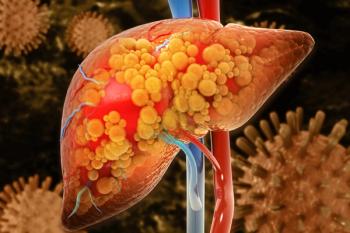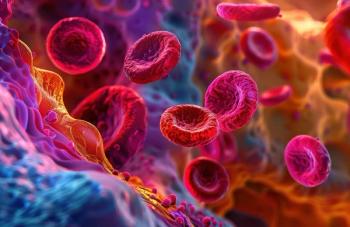
Cancer Symptom Algorithm Identifies Patients at Greater Risk of ED Visits, Hospital Admissions
A novel algorithm based on patient-reported outcome questionnaires stratified patients by disease complexity and effectively identified those at a higher risk of having an acute care visit.
A symptom complexity algorithm derived from patient-reported outcomes (PROs) may help predict the likelihood of unplanned emergency department (ED) visits and hospital admissions (HAs) among patients with
Gauging and mitigating the risk of impromptu ED visits outside of scheduled outpatient appointments is a key aspect of managing patients with cancer, the study authors wrote. While some concerns warrant such visits, a significant proportion of ED visits and HAs may be avoidable for patients with cancer. Taking steps to minimizing unplanned visits could reduce patient distress as well as health care costs to the system.
The study aimed to identify common characteristics among patients using acute care services and determine which patients would likely benefit from more clinician support or additional care services to reduce the risk of ED visits or HAs.
“Using a tool to generate a symptom complexity score—summarizing a large amount of symptom information and condensing it into a quick, easily interpreted alert—allows clinicians to have a real time, comprehensive overview of the symptom severity a patient is experiencing,” lead researcher Linda Watson, RN, PhD, Cancer Care Alberta and the University of Calgary, said in a
The retrospective, observational study included PRO data from 29,133 patients with cancer in Alberta, Canada. All patients completed at least one symptom-reporting survey between October 1, 2019, and April 1, 2020. PROs were collected via the Edmonton Symptom Assessment System Revised and the Canadian Problem Checklist—both standardized PRO tools that meet national reporting standards.
The novel algorithm in the study utilized ratings from 9 symptoms to assign patients disease complexity scores of low, medium, or high. Researchers expected higher algorithm-determined disease complexity to be associated with greater odds of having an ED visit or HA within 7 days of answering a PRO questionnaire. A total of 738 patients in the overall cohort (2.5%) had an ED visit and 452 had an HA (1.6%) within 7 days of filling out the questionnaire.
Patients classified as having high complexity disease based on the algorithm were more likely to have an ED visit (odds ratio [OR], 3.10; 95% CI, 2.59-3.70) or HA (OR, 4.20; 95% CI, 3.36-5.26) than patients with low complexity disease, regardless of demographic factors. Compared with patients who had low disease complexity, those with moderate complexity were also more likely to have an ED visit (OR, 1.83; 95% CI, 1.51-2.20) or be admitted to a hospital (OR, 1.92; 95% CI, 1.49-2.47).
The findings suggest that PRO data from patients with cancer can be valuable and that novel algorithms can help tap into that data and make them more useful in the clinical setting.
“Clinicians who treat patients with cancer are aware that identifying and supporting those who are at the highest risk for ED visits or hospitalizations will lead to better patient outcomes and experiences,” said Kay Yeung, MD, PhD, an oncologist and associate professor of medicine at UC San Diego Health Moores Cancer Center and member of the
References
1. Watson L, Qi S, Link C, Delure A, Afzal A, Barbera L. Patient-reported symptom complexity and acute care utilization among patients with cancer: a population-based study using a novel symptom complexity algorithm and observational data. J Natl Compr Canc Netw. 2023;21(2):173-180. doi:10.6004/jnccn.2022.7087
2. Cancer symptom algorithm presented in JNCCN can aid doctors in predicting patients at risk for unplanned emergency visits. News release. National Comprehensive Cancer Network. February 15, 2023. Accessed February 15, 2023. https://www.nccn.org/home/news/newsdetails?NewsId=3624
Newsletter
Stay ahead of policy, cost, and value—subscribe to AJMC for expert insights at the intersection of clinical care and health economics.












































